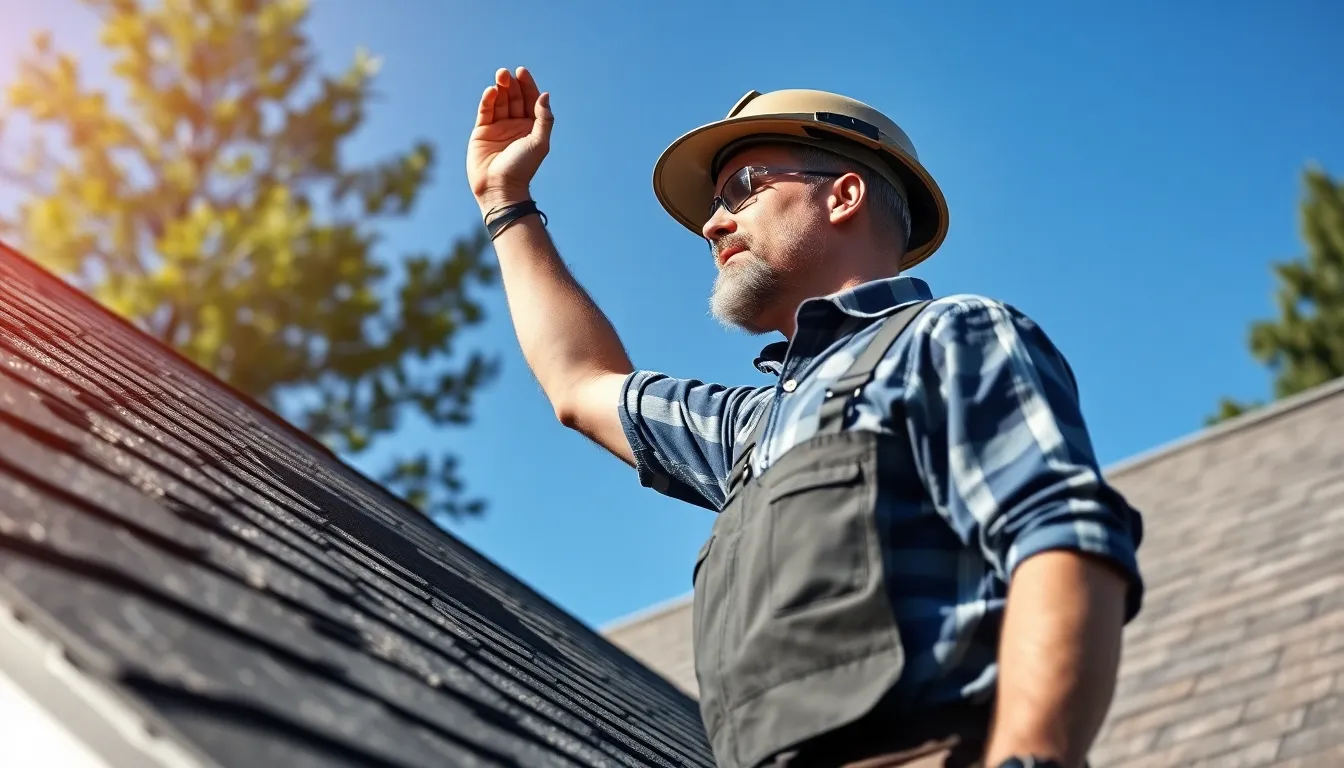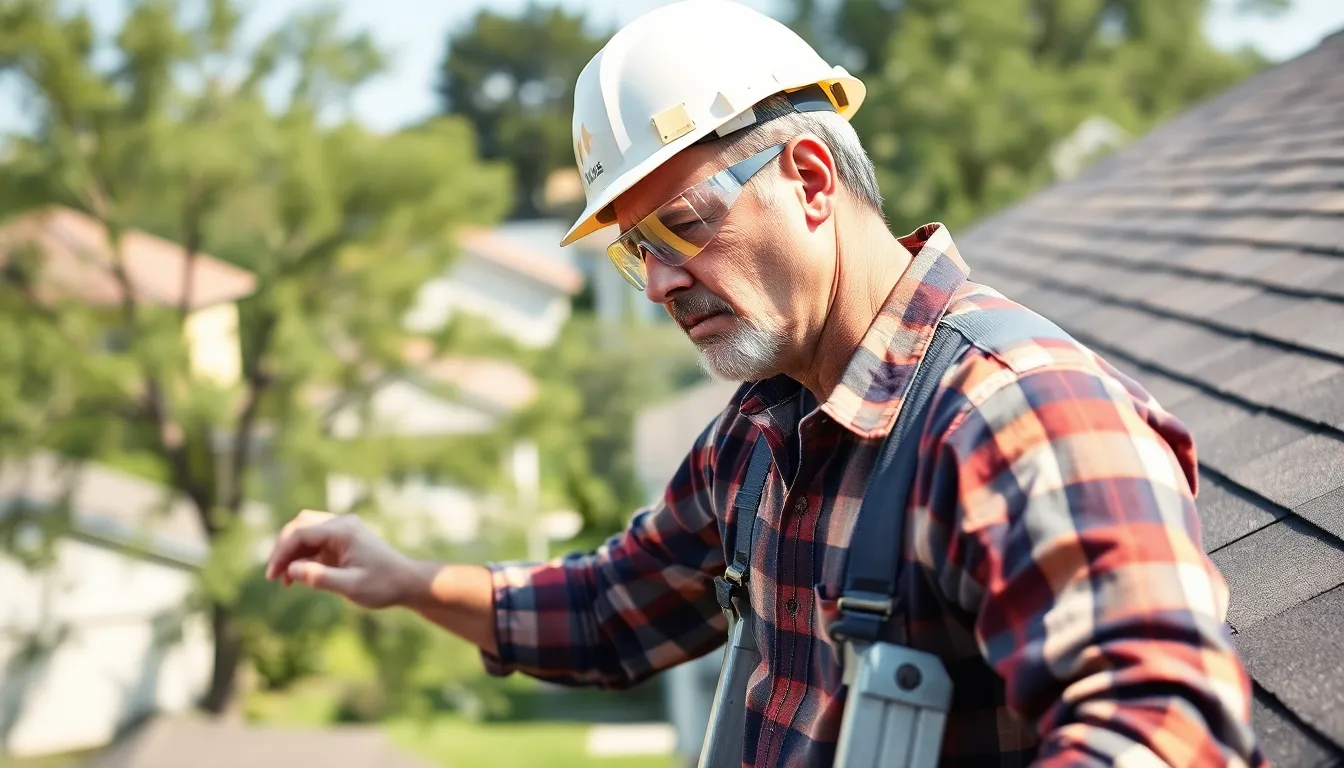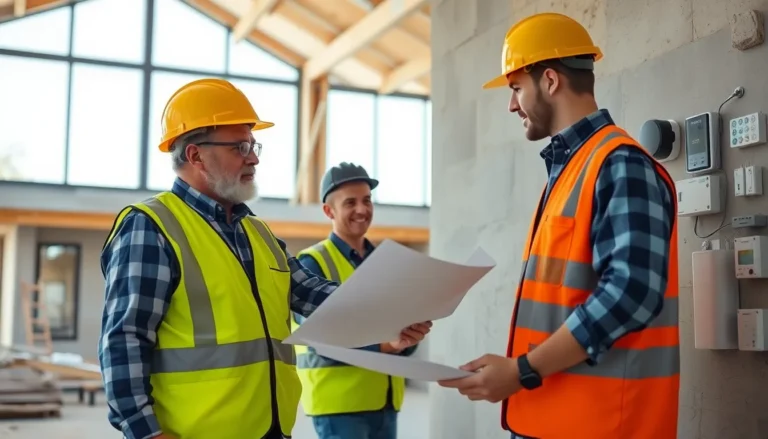Table of Contents
ToggleA well-maintained roof is crucial for protecting a home from the elements. Regular roof inspections can prevent costly repairs and extend the lifespan of roofing materials. Yet, many homeowners overlook this essential task, often leading to bigger problems down the line. Understanding how to conduct a thorough roof inspection can save time and money while ensuring a safe living environment.
With the right tips, anyone can confidently assess their roof’s condition. From identifying common signs of wear and tear to knowing when to call in a professional, these insights are invaluable. Whether it’s spotting missing shingles or checking for water damage, being proactive about roof maintenance keeps homes secure and comfortable.
Importance Of Roof Inspections
Regular roof inspections hold significant value for homeowners. They enable early detection of issues, safeguarding homes against severe damage and expensive repairs.
Protecting Your Investment
Roof inspections protect property value. Homeowners can identify potential problems before they escalate, preserving the integrity of roofing materials. Regular checks help avoid costly replacements and maintain aesthetic appeal. For example, fixing minor leaks or replacing a few shingles saves much more than addressing widespread water damage.
Enhancing Home Safety
Roof inspections enhance safety for occupants. They uncover hazards such as weakened structures or mold growth. By addressing these issues, homeowners reduce risks associated with leaks, structural failures, and related health concerns. A well-maintained roof contributes to a secure living environment, ensuring peace of mind for residents.
Common Roof Issues To Look For

Regular roof inspections reveal several common issues. Homeowners should remain vigilant about identifying these problems to ensure optimal roof performance.
Missing Shingles
Missing shingles expose roofs to water infiltration and other weather-related damages. Signs of missing shingles include:
- Bare Spots: Areas on the roof where shingles are absent, often resulting from strong winds or aging materials.
- Granule Loss: Accumulation of granules in gutters or downspouts indicates shingle degradation, reducing their protective qualities.
- Curling or Cracked Shingles: Shingles that show curling edges or cracks may detach easily, leading to leaks.
Replacement of missing or damaged shingles is crucial. Professionals recommend addressing these issues promptly to prevent deteriorating roofing structures.
Water Damage Signs
Water damage manifests in various ways. Homeowners should inspect for these telltale signs:
- Dark Stains: Stains on ceilings or walls suggest roof leaks that warrant immediate attention.
- Mold Growth: Black or green patches indicate moisture problems, potentially leading to health hazards.
- Sagging Areas: Roofs that appear saggy or uneven often point to structural damage caused by prolonged water exposure.
Detecting water damage early allows property owners to mitigate repair costs and preserve indoor air quality. Addressing these issues immediately enhances both safety and home value.
Tools Needed For Effective Inspections
Using the right tools enhances the efficiency and safety of roof inspections. Homeowners and inspectors should equip themselves with essential gear and safety equipment for thorough assessments.
Essential Gear
- Ladder
A sturdy, extendable ladder allows access to the roof for visual inspections. Choose a ladder made from lightweight aluminum or fiberglass for durability.
- Flashlight
A bright flashlight illuminates dark areas, particularly in attics or under eaves. Opt for a high-lumen flashlight for maximum visibility.
- Binoculars
Binoculars provide a closer look at hard-to-reach areas from the ground. Select a pair with at least 8x magnification for detailed observation.
- Measuring Tape
A measuring tape assists in noting dimensions of roof sections and identifying areas needing repairs. A 25-foot tape measures most residential roofs effectively.
- Camera
A camera captures images of damage for documentation. Use a digital camera or smartphone to create a visual record of findings.
- Notepad and Pen
A notepad allows for jotting down observations and action items. Use waterproof paper to withstand outdoor conditions.
Recommended Safety Equipment
- Safety Harness
A safety harness provides fall protection while on the roof. Ensure it meets OSHA standards for maximum safety.
- Non-slip Footwear
Non-slip shoes or boots reduce the risk of slipping. Choose footwear with good traction and ankle support for better stability.
- Hard Hat
A hard hat protects the head from falling debris. This item is essential when inspecting roofs in areas with trees or nearby structures.
- Safety Goggles
Safety goggles shield eyes from dust and debris. Select goggles that fit properly and provide clear visibility.
- Gloves
Durable, non-slip gloves protect hands from sharp materials and provide grip. Choose gloves made from latex or synthetic materials for flexibility.
- Reflective Vest
A reflective vest increases visibility during inspections, especially near busy roads. Opt for a vest that meets safety standards for high-visibility apparel.
Seasonal Roof Inspection Tips
Regular seasonal inspections help maintain roof integrity and prevent damage from weather changes. Homeowners should adapt their inspection focus based on seasonal conditions.
Spring Checks
Spring inspections focus on identifying winter damage and preparing for the rainy season. Homeowners should:
- Inspect for debris: Remove leaves, branches, and other debris that may have accumulated over winter. Debris can trap moisture and lead to mildew or rot.
- Examine shingles: Look for damaged, missing, or curling shingles. These issues can allow water infiltration and should be addressed promptly.
- Check gutters and downspouts: Ensure gutters are clear of obstructions. Proper water flow prevents overflow and reduces chances of basement flooding.
- Assess flashing: Inspect metal flashing around chimneys and vents for wear or gaps. Damaged flashing allows water to penetrate and cause leaks.
- Look for moss or algae: These growths can retain moisture and damage roofing materials. Consider cleaning or using preventive treatments to inhibit growth.
Winter Preparations
Preparing roofs for winter minimizes risk from snow and ice. Key preparation steps include:
- Clear roof surfaces: Remove leaves and debris to prevent ice dams that can cause water backup.
- Inspect attic ventilation: Check that vents are unobstructed and functioning well. Proper ventilation reduces heat buildup, decreasing icicle formation on eaves.
- Examine insulation: Ensure adequate insulation to prevent warm air from escaping, which can lead to snow melt and subsequent refreezing.
- Assess structural elements: Check for loose or missing shingles, as they’re prone to wind damage. Address any weak spots before winter storms.
- Secure gutters: Ensure gutters are securely attached and slope correctly to facilitate water drainage. Well-maintained gutters prevent ice dam formations.
Seasonal roof inspections serve to maintain the roof’s performance and prevent costly repairs, protecting the home throughout the year.
When To Hire A Professional
Recognizing when to hire a roofing professional is crucial for effective roof maintenance. Homeowners should consider professional assistance in several situations.
- Significant Damage: Hire a professional if there are visible signs of significant damage, like multiple missing shingles or large leaks. Experts can assess the extent of the damage and recommend necessary repairs.
- Structural Concerns: Choose to consult a professional when there are signs of sagging or bending in the roof structure. Structural issues can jeopardize the safety of the entire home, necessitating expert evaluation.
- Complex Repairs: Seek professional help for complex repairs involving roofing systems, such as those with multiple layers or steep slopes. Experts possess the skills and equipment for safe and effective repairs.
- Lack of Experience: Engage a professional if homeowners are inexperienced with roof inspections. It’s essential for them to have the knowledge to identify issues that may not be immediately visible, ensuring comprehensive evaluation.
- Health Hazards: If mold growth or other health hazards appear, hire a professional immediately. Mold can pose severe health risks, requiring specialized remediation that exceeds typical repair work.
- Inadequate Tools: Call a professional if homeowners lack the necessary tools for a thorough inspection or repair. Proper equipment is vital for conducting safe and effective maintenance.
- Insurance Claims: In cases of storm damage or other disasters, employ a professional for documentation and repair work related to insurance claims. Professionals provide certified assessments that can facilitate the claims process.
Proactive decision-making regarding roof maintenance not only enhances the home’s safety but also preserves its value.
Regular roof inspections are essential for maintaining a safe and secure home. By staying vigilant and addressing minor issues promptly, homeowners can avoid costly repairs and preserve their property’s value. Seasonal inspections not only protect against the elements but also enhance indoor air quality and safety. Utilizing the right tools and safety equipment ensures a thorough evaluation while minimizing risks during the process. When in doubt, seeking professional assistance can provide peace of mind and ensure that any significant concerns are properly addressed. Prioritizing roof maintenance leads to a healthier living environment and safeguards the investment in one’s home.





